| [1] 马志伟,张勇杰,王荣.骨形成蛋白和氯己定双缓释的壳聚糖温敏凝胶用于牙周组织再生的实验研究[J].中华口腔医学杂志,2008, 3(5):273-277.
[2] Park SJ, Kim MJ, Kim HB, et al. Trichostatin A sensitizes human ovarian cancer cells to TRAIL-induced apoptosis by down-regulation of c-FLIPL via inhibition of EGFR pathway. Biochem Pharmacol. 2009;7(8):1328-1336.
[3] Gârlea A, Melnig V, Popa MI. Nanostructured chitosan-surfactant matrices as polyphenols nanocapsules template with zero order release kinetics. J Mater Sci Mater Med. 2010;1(4):1211-1223.
[4] 张素琴,孟祥茂,胡艳苓,等.大鼠骨髓基质细胞在温敏型壳聚糖水凝胶中的生长[J].中国组织工程研究与临床康复,2008,12(10): 1876-1878.
[5] 李偏,冯进益,蔡志刚,等.温敏性壳聚糖水凝胶对大鼠成骨细胞的毒性[J].中国组织工程研究与临床康复,2011,15(25): 4602- 4606.
[6] 林萍,赵雨,吴悦,等.壳聚糖及其季铵盐对铜绿假单胞菌生物膜形成的影响[J].检验医学,2012,10(7):854-857.
[7] Yan J, Yang L, Wang G, et al. Biocompatibility evaluation of chitosan-based injectable hydrogels for the culturing mice mesenchymal stem cells in vitro. J Biomater Appl. 2010;24(7): 625-637.
[8] 韩宁波,赵建宁,张勇,等.结合转化生长因子β1的肝素化胶原/壳聚糖支架复合脂肪干细胞修复兔关节软骨缺损[J].中国组织工程研究与临床康复,2009,13(34):6611-6616.
[9] 冯万文,莱浙军,李小民,等.骨髓间充质干细胞和软骨细胞共培养种子细胞特征及体内成软骨活性[J].中国组织工程研究与临床复,2008,12(3):442-446.
[10] 蔡良良,吕国忠,陈敬华,等.光交联壳聚糖水凝胶膜治疗深度烧伤创面的临床研究[J].中华损伤与修复杂志,2010,5(1): 61-65.
[11] 张弩,吴宇.温敏性壳聚糖水凝胶复合细胞因子修复兔关节软骨缺损[J].中国组织工程研究,2012,16(34):6298-6302.
[12] 马勇,陈金飞,张允申,等.可注射性壳聚糖/β-甘油磷酸二钠凝胶复合同种异体软骨细胞修复兔膝关节软骨缺损及威灵仙的干预效应[J].中国组织工程研究与临床康复, 2010,14(16): 2865- 2869.
[13] David S, Gruber H, Mayer BA, et al. Lumbar spinal fusion using recombinant human bone morphogenetic protein in the canine. A comparison of three dosages and two carriers. Spine. 1999;24(19):1973-1979.
[14] 钟婧,洪艳,陈勇.壳聚糖季铵盐的最新研究进展[J].中国组织工程研究与临床康复,2008,12(6):1115-11181.
[15] 鞠刚,徐卫袁,张亚,等.胶原壳聚糖支架复合脂肪干细胞修复兔关节软骨缺损[J].中国组织工程研究与临床康复,2011,15(29): 5327-5333.
[16] Li XG, Yang Z, Zhang A, et al. Repair of thoracic spinal cord injury by chitosan tube implantation in adult rats. Biomaterials. 2009,30(6):1121-1132.
[17] Kwon JS, Kim GH, Kim da Y, et al. Chitosan-based hydrogels to induce neuronal differentiation of rat muscle-derived stem cells. Int J Biol Macromol. 2012;51(5):974-979.
[18] 刘泽汉,王立春,张宏颖,等.动物脂肪干细胞联合双重转化生长因子释放支架修复关节软骨损伤的实验研究[J].中国骨与关节损伤杂志,2012,12(12):1098-1101.
[19] 孙冰,刘黎.壳聚糖季铵盐温敏型原位凝胶的研究[J].化工进展, 2010,29:242-245.
[20] Jarry C, Leroux JC, Haeck J, et al. Irradiating or autoclaving chitosan /polyol solutions: effect on thermogelling chitosan-β-glycerophosphate systems. Chem Pharm Bull (Tokyo). 2002;50(10):1335-1340.
[21] Zhang Y, Wu C, Friis T, et al. The osteogenic properties of CaP/silk composite scaffolds. Biomaterials. 2010;31(10):2848 -5286.
[22] Tang Z, Xie Y, Yang F, et al. Porous tantalum coatings prepared by vacuum plasma spraying enhance bmscs osteogenic differentiation and bone regeneration in vitro and in vivo. PLoS One. 2013;8(6):e66263.
[23] Çapk?n M, Çakmak S, Kurt FÖ, et al. Random/aligned electrospun PCL/PCL-collagen nanofibrous membranes: comparison of neural differentiation of rat AdMSCs and BMSCs. Biomed Mater. 2012;7(4):045013.
[24] Nie L, Yin YL, Liu YQ, et al. Ultrafiltration membrane extract mixture from Angelica sinensis and Hedysarum polybotrys induced transdifferentiation of BMSCs in mice: an experimental research. Zhong guo Zhong Xi Yi Jie He Za Zhi. 2013;33(5):632-637.
[25] Mohammad-Gharibani P, Tiraihi T, Mesbah-Namin SA, et al. Induction of bone marrow stromal cells into GABAergic neuronal phenotype using creatine as inducer. Restor Neurol Neurosci. 2012,30(6):511-525.
[26] Sagara J, Makino N. Glutathione induces neuronal differentiation in rat bone marrow stromal cells. Neurochem Res. 2008;33(1):16-21.
[27] Ye Y, Zeng YM, Wan MR, et al. Luinduction of human bone marrow mesenchymal stem cells differentiation into neural-like cells using cerebrospinal fluid. Cell Biochem biophys. 2011;59(3):179-184.
[28] 钟俊,刘卫平,龙乾发,等.两种诱导骨髓间充质干细胞向GABA 能神经元分化的比较[J].中华神经外科疾病研究杂志,2012, 11(2):141-144.
[29] Gash DM, Zhang Z, Ovadia A, et al. Functional recovery in parkinsonian monkeys treated with GDNF. Nature. 1996; 380(6571):252-255.
[30] Lim PA, Tow AM. Recovery and regenerat ion after spinal cord injury: a review and summary of recent literature. Ann Acad Med Singapore. 2007;36(1):49-57.
[31] Cohen AD, Zigmond MJ, Smith AD. Effects of intrastriatal GDNF on the response of dopamine neurons to 6-hydroxydopamine: Time course of protection and neurorestoration. Brain Res. 2011;13(70):80-88.
[32] Ding K, Yang Z, Zhang YL, et al. Injectable thermosensitive chitosan/β-glycerophosphate/collagen hydrogel maintains the plasticity of skeletal muscle satellite cells and supports their in vivo viability. Cell Biol Int. 2013;37(9):977-987.
[33] Qi BW, Yu AX, Zhu SB, et al. Chitosan/poly(vinyl alcohol) hydrogel combined with Ad-hTGF-β1 transfected mesenchymal stem cells to repair rabbit articular cartilage defects. Exp Biol Med (Maywood). 2013;238(1):23-30. |
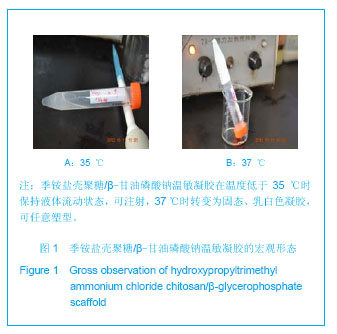
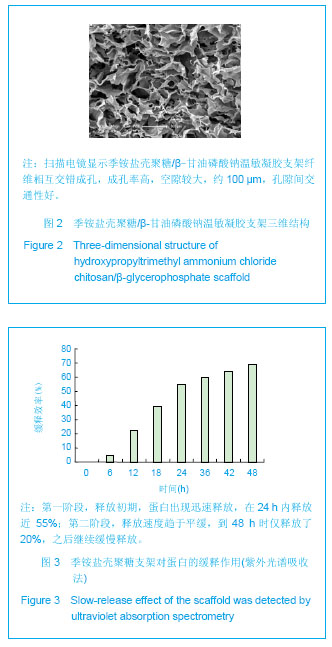
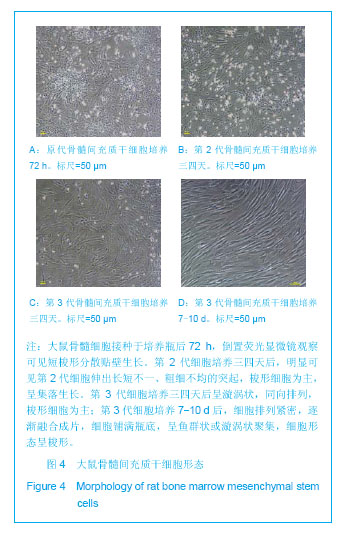
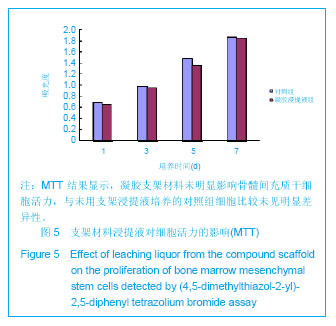
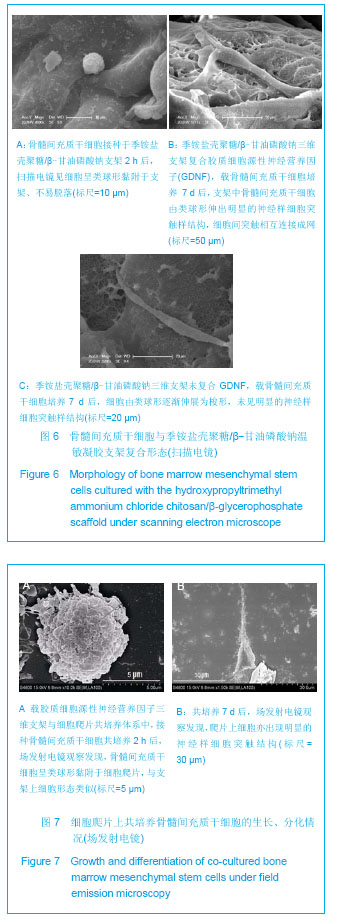
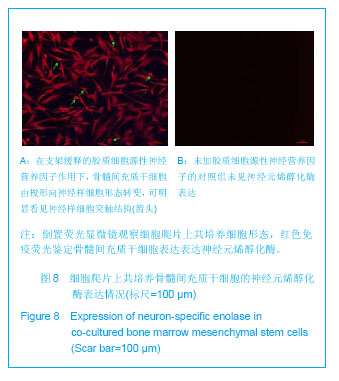
.jpg)